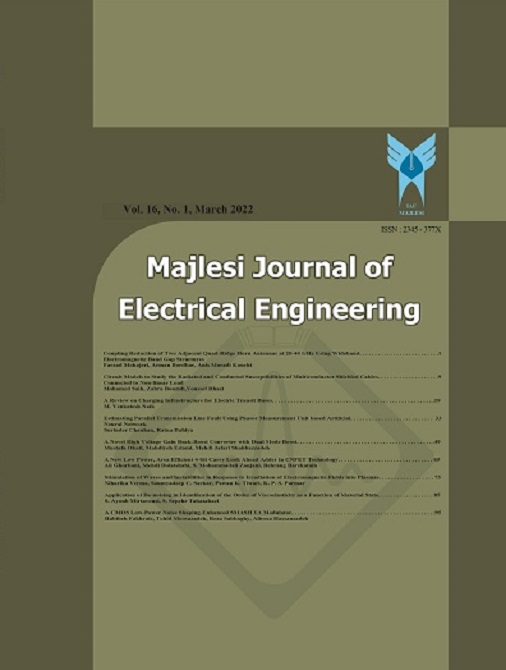[1] J. Dong, W.W., "CASIA Tampered Image Detection Evaluation Database (CASIA TIDE v2.0)[Online]", Available: http://forensics.idealtest.org:8080/index_v2.html. Chinese Academy of Sciences, 2010.
[2] Rey, C. and J. LD, "A survey of watermarking algorithms for image authentication", EURASIP Journal on Ap plied Signal Processing, 6: pp. , 2002.
[3] Ng, T.T., C.Y. Lin, and Q. Sun, "Passive-blind im-age forensics", in Multimedia Security Technologies for Digital Rights, chapter 06. Elsvier, 2006.
[4] Ng, T.T. and Q. Sun, "Blind detection of photomontage using higher order statistics", in IEEE International Symposium on Circuits and Systems, 2004.
[5] Luka´s, J. and M. Goljan, "Detecting digital im-age forgeries using sensor pattern noise", in Society of Photo-Optical Instrumentation Engineers (SPIE) Conference Series, pp. 11, 2006.
[6] A. C. Popescu, "Exposing digital forgeries in color filter array interpolated images", IEEE Transactions on Signal Processing, (53(10, pp. 12, 2005.
[7] Dirik, A.E. and N. Memon, "Image tamper detection based on demosaicing artifacts", in IEEE International Conference on Image Processing (ICIP), pp. 4, 2009.
[8] Johnson, M.K., "Exposing digital forgeries by detecting inconsistencies in lighting", in ACM Multimedia and Security Workshop, pp. 10, 2005.
[9] M. K. Johnson, H.F., "Exposing digital forgeries in complex lighting environments", IEEE Transactions on In-formation Forensics and Security, 2(3), pp. 11, 2007.
[10] Ng, T.T. and Q. Sun, "A data set of authentic and spliced image blocks", Tech. Rep., DVMM, Columbia University, Dataset: http://www.ee.columbia.edu/ln/dvmm/do wnloads/AuthSplicedDataSet/photographers.htm., 2004.
[11] Shi, Y.Q. and G. Xuan, "Steganalysis versus splicing detection", in International Workshop on Digital Watermarking, 2007.
[12] Ghorbani, M., M.Firozmand, and A. Faraahi, "DWT-DCT (QCD) based copy-move image forgery detection", in 18th IEEE International Conference on Systems, Signals and Image Processing (IWSSIP), pp. 14, 2011.
[13] Gh. Muhammad, M.H.A.-H., and M. H. George Bebis, "Image forgery detection using steerable pyramid transform and local binary pattern", Springer, 2013.
[14] Chi-Man Pun, Xiao-Chen Yuan, and Xiu-Li Bi, "Image Forgery Detection Using Adaptive Over-Segmentation and Feature Point Matching", IEEE Transactions on Information Forensics and Security, 2015.
[15] Archana V. Mire, S. B. Dhok, N. J. Mistry and P. D. Porey, "Factor Histogram based Forgery Localization in Double Compressed JPEG Images", Procedia Computer Science 54, pp. 690–696, 2015.
[16] L. G. Birajdar, e., "Passive Image Manipulation Detection Using Wavelet Transform and Support Vector Machine Classifier", Springer, 2016.
[17] Chi-Man Pun, X.-C. Yuan, and Xiu-Li Bi, "Multi-scale noise estimation for image splicing forgery detection", Elsevier Inc., 2016.
[18] Y. Obara, Y. Niwa, and SH. Wada, "Detection and Identification of Image Manipulation Based on Reversible Histogram shift.",Wiley Periodicals, Inc., 2017.
[19] A. Kuznetsov and V. Myasnikov, "A new copy-move forgery detection algorithm using image preprocessing procedure", Elsevier Inc., 2017.
[20] Khizar Hayat, Tanzeela Qazi, "Forgery detection in digital images via discrete wavelet and discrete cosine transforms", Computers and Electrical Engineering, elsevier, pp.1-11, 2017
[21] N. Alipour and A. Behrad, "Forgery and Double Compression Detection in Digital Images using Combined Features of Quantization Effects on DCT Coefficients", Tabriz Jouornal of Engineering Electrical, 47(2), 2017.
[22] Srivastava, D.K. and L. Bhambhu, "Data classification using support vector machine", Journal of Theoretical and Applied Information Technology, 12, pp. 8, 2010.
[23] http://www.ee.columbia.edu/ln/dvmm/downloads/authsplcuncmp/dlform.html
[24] http://ifc.recod.ic.unicamp.br/fc.submission

